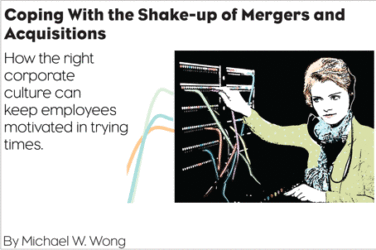For today’s companies, including those in the healthcare industry, the pursuit of upstream discovery, ideation, or invention can be very far removed from ultimate financial returns and success. In fact, oftentimes, when innovation is done correctly, it can be years before a given product or service is ready to “hit the shelves.” And along the way numerous teams and stakeholders will likely come in contact with an innovation, each making a contribution to the finished product.
Therefore, it is pivotal that everyone is on the same page when it comes to measuring how successful a project can be, and then ultimately whether it is market-ready, needs more time to incubate, or should be scrapped altogether. The problem is that measuring innovation correctly is not only tough to do, but many organizations struggle to get out of their own way when it comes to getting the appropriate measures and metrics in place.
With that in mind, here’s a closer look at how to measure innovation, as well as what execs can do to truly improve the way their company innovates.
Innovation Is Inherently Hard to Measure
The difficulties begin when leaders assume that “innovation” is one monolithic category of activities. Far from it: different types of innovations have fundamentally different levels of risk, degrees of uncertainty, and variance in the possible range of outcomes.
In particular, some innovations are capable of spawning multiple benefits across an organization—usually when they operate at the platform or capability level. Imagine that a company sets up a comprehensive data lake of customer and market information, and then applies artificial intelligence (AI) and machine learning (ML) technologies to predict customer behavior and market trends. This capability may yield new insights for every product line or business unit across the company. Those insights then yield performance improvements in myriad ways—both large and small—ranging from major product changes to little tweaks in marketing campaigns.
Do you count all of those gains as direct impact from the big-data project and/or the specific AL/ML technologies? Just cataloging all of the points of impact can be a full-time job. What’s more, it can be nearly impossible to disentangle positive outcomes from the normal operating processes they benefit. Was it really the new technology that made the difference in net-new revenue, or was it the new team member hired last quarter? Everyone will have opinions; few will be able to prove causality. And yet, these platform-level innovations, since they are the best vehicle for systematic value-creation, are precisely where innovation efforts contribute the most (by far) to overall company success. In most organizations, however, the ability to count that value is nonexistent.
Most Companies Don’t Even Try Very Hard
The standard way to try and measure innovation results—which itself is a generous phrasing—is to quantify the impact of innovation through a combination of Vitality Index (or some backward-looking calculation of an innovation’s contribution to revenue) and Net Present Value (NPV) (or some forward-looking calculation of an innovation’s expected future value). Unfortunately, neither of these methods have proven particularly effective.
The (Product) Vitality Index (also sometimes PVI) measures aggregate impact by looking at the financial returns from new products that have been released or new initiatives that have been launched, and then tracks the causal chain back to the innovations that spawned them. Among its multiple shortcomings: PVI doesn’t comprehensively consider each innovation’s impact on its own terms, and thus typically leaves large portions of implicit value uncounted. In addition, it usually lags behind the key decisions and work streams by three to five years (i.e., until the revenue finally shows up downstream). By that time, key portfolio decisions have long since been made; the innovation team will have already invested in its next round bets before the hard numbers are in from the previous generation of projects and programs.
On the other hand, valuation methods such as NPV—and other financial-accounting methods such as internal rate of return (IRR)—have different shortcomings. They are fundamentally forward-looking, by trying to predict expected future value, and thus a potential complement to trailing measures such as Vitality Index. Yet methods like NPV perform very poorly in modeling the expected future value of innovation efforts, because they fail to take into account the extreme variance that is inherent in the innovation game. A framework designed to assess straightforward capital investments within the core business fares poorly when applied to a substrate that is deeply speculative.
Left without a single surefire option, most companies just muddle through. A recent Wellspring innovation study of 300 companies in the U.S. and UK with $1B+ in annual revenue (including 24 healthcare companies and 22 pharma companies) revealed that most companies employ a grab-bag of different innovation metrics, often without rhyme or reason.1 In fact, many companies find that various measurement schemes in different parts of the organization actively conflict with one another—or offer irreconcilably different views of what’s really happened.
But There’s a Better Way…
The key to measuring innovation’s impact is to build fit-for-purpose metrics and measurement schemes, rather than copy/pasting the balance-sheet methods that are typical in the company’s day-to-day operations. For starters, not all innovations are the same. In fact, some are quite easy to measure. Think about features that are added to an existing product. They are typically designed to accomplish a specific goal. Then, they are planned as discrete items on the product roadmap and launched at the end of a development process. The company can then measure the new feature’s impact using the normal product metrics they use all the time. Seems easy enough, right?
That may work in some discrete cases. But it won’t work for assessing the innovation portfolio, because many types of innovation aren’t nearly as plug-and-chug. This is particularly true of strategic innovations. These are long-term efforts that typically begin small and lean, incubated within an exploratory team. But if they succeed, they can become sprawling affairs. And often, the steps in route are not sequential, nor are they planned, nor are they even really understood in advance. Innovators spend most of their time shooting in the dark and seeing if they can get something to stick.
Rather than a direct financial reckoning on a project-by-project basis, the measurement of strategic innovations begins by mapping out the company’s strategic intent. The first step is to establish strategic areas of interest where leadership agrees on key programs. They may be focused on new technologies, demand patterns, regulatory changes, etc., but they are often the result of how the world is changing and which factors may impact the business going forward. Then, you can chart the progress of all the various upstream and “skunkworks” innovation efforts in a given strategic area against broadly defined strategic goals. An example of this type of goal could be “we will successfully incorporate blockchain into our contracting processes within the next five years.” With innovation programs, the deep weeds are messy and contain plenty of dead ends. But the ultimate goals should be charted and then refined with tightening rigor as the effort proceeds.
Companies Need to Keep Their Eyes Peeled
In addition to the top-down strategic priorities, companies with world-class Innovation Ops must be prepared to notice and graduate new “areas of interest” from the bottom up. It is impossible to know in advance what exactly the future will bring. No one—including its own founders—expected an Airbnb-type business to upend the hospitality industry. That is, until it actually happened. Innovation leaders must be cognizant of the need to update and adjust the strategic directions they choose to measure according to how the world around them evolves and changes.
The benefits of productive vigilance extend internally, as well. In any organization of reasonable size, it is typical for a wide variety of innovation and innovation-adjacent activities to be taking place simultaneously. Inevitably, some of these efforts will be owned and driven by the formal Innovation and/or R&D function; others will not. I’ve run into innumerable cases in which multiple teams around the world were chasing the same new discovery, or repeating the same market study, or courting the same innovation partner—without any idea they were stepping on each other’s toes. The best companies understand that their innovation efforts need to be transparent and documented across the board. To do otherwise is to ask everyone to fly half-blind.
Therein lies the most important factor of all in your organization’s ability to measure innovation: access to all the relevant information, organized appropriately. Alongside the measurement methods and techniques themselves, it is critical to have in place a solid Innovation Ops practice, including software that can catalogue and track all of the various activities and projects happening in the innovation pipeline and portfolio. Short of that, just collecting the information in order to do the measurements becomes a back-breaking endeavor. But if you combine solid process with good systems, and layer the fit-for-purpose metrics approach explained above, you will find that a once-inscrutable set of innovation activities begins to take a measurable, predictable form.
References:
1. https://www.wellspring.com/the-2021-rd-and-innovation-agenda.









